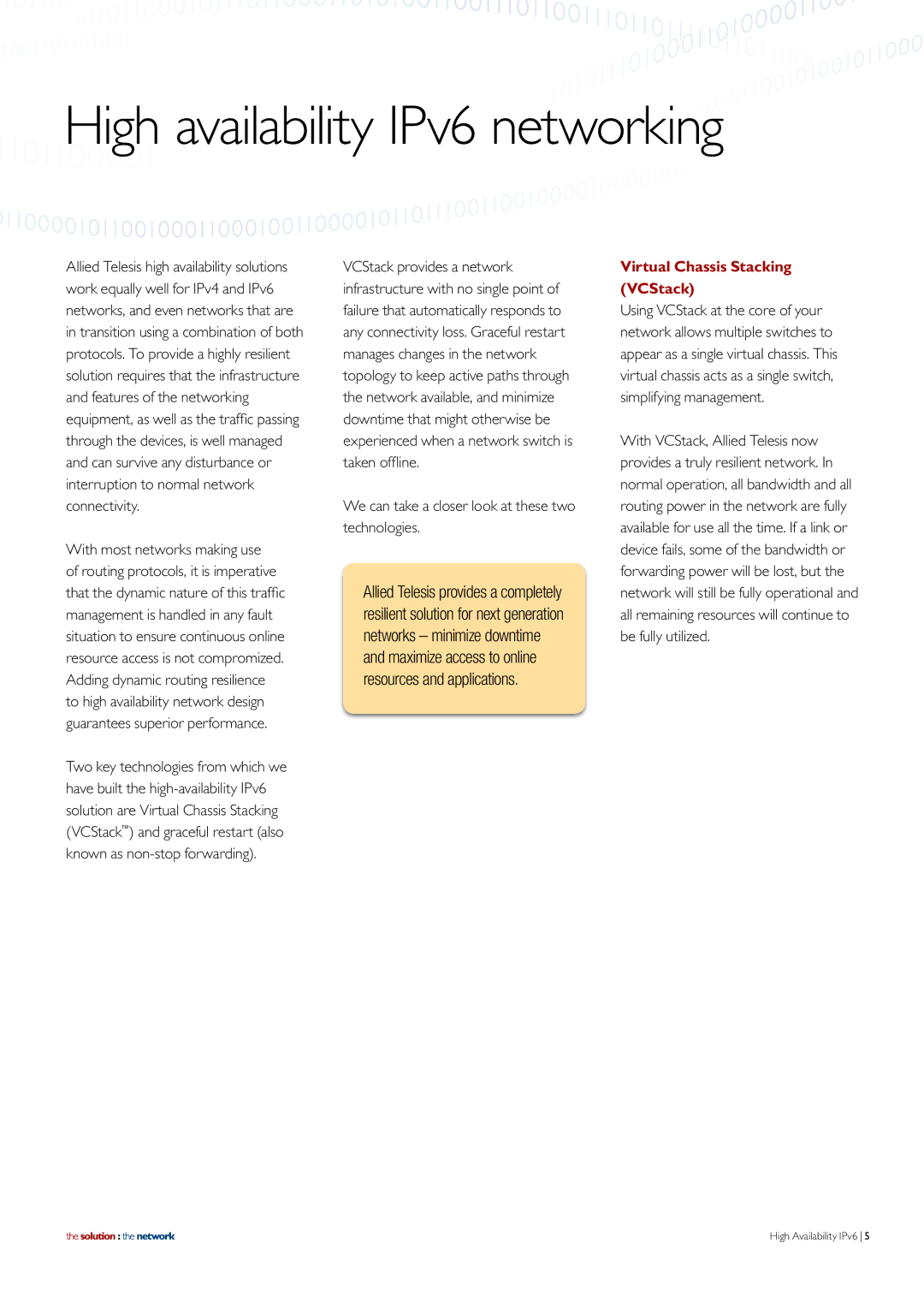IPV6 specifications
Allied Telesis is a leader in providing advanced networking solutions, and its implementation of IPv6 technology showcases their commitment to future-proof networking. With the exhaustion of IPv4 addresses, the transition to IPv6 is more critical than ever. Allied Telesis's IPv6 solutions offer an array of features, technologies, and characteristics designed to enhance connectivity and performance in today's digital landscape.One of the standout features of Allied Telesis's IPv6 implementation is its robust support for dual-stack networking. This allows organizations to run both IPv4 and IPv6 simultaneously, ensuring seamless communication as they transition to the newer protocol. This dual-stack capability is essential for businesses that need to maintain legacy systems while adopting modern internet standards.
Additionally, Allied Telesis devices are equipped with advanced routing protocols that support IPv6, such as OSPFv3 and RIB (Routing Information Base). These protocols enable efficient routing and management of IP addresses across large networks. This enhances routing efficiency and optimizes network performance, crucial for enterprises operating in a high-demand environment.
Security is another vital aspect of Allied Telesis’s IPv6 features. The technology includes native support for IPsec, which provides encryption and secure tunneling capabilities for data transmission. This built-in security feature ensures robust protection against potential threats, giving organizations peace of mind as they expand their IP infrastructure.
Another important characteristic of Allied Telesis's IPv6 technology is its simplified network management tools. The implementation of IPv6 promotes stateless address autoconfiguration (SLAAC), allowing devices to configure their own IP addresses automatically. This reduces the administrative burden on IT teams and decreases the chances of address conflicts within the network.
Moreover, Allied Telesis's IPv6 solutions are designed with quality of service (QoS) in mind. This is particularly crucial for organizations that rely on voice and video over IP applications, where latency and packet loss must be minimized to maintain a high-quality user experience.
In conclusion, Allied Telesis’s IPv6 technology is a comprehensive solution that combines dual-stack support, advanced routing protocols, robust security measures, simplified management, and QoS features. These aspects make it a compelling choice for organizations seeking to upgrade their network infrastructure and embrace the future of internet connectivity. With Allied Telesis, businesses can confidently transition to IPv6 and unlock greater capabilities for their networking needs.

